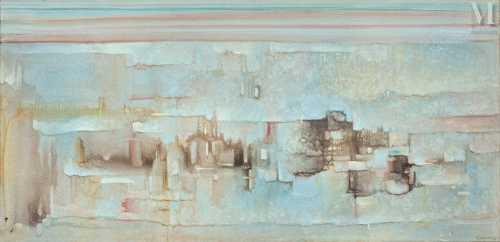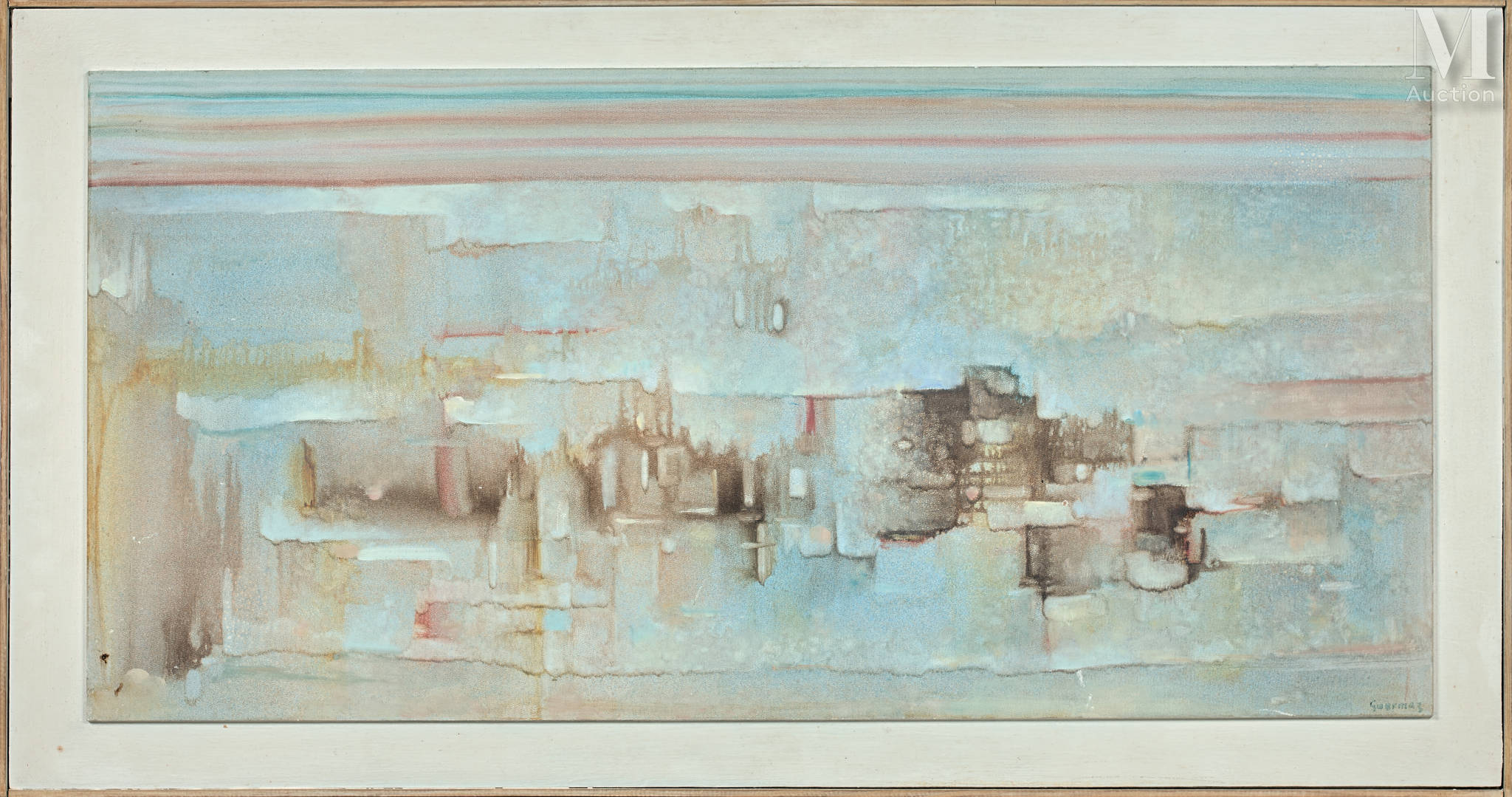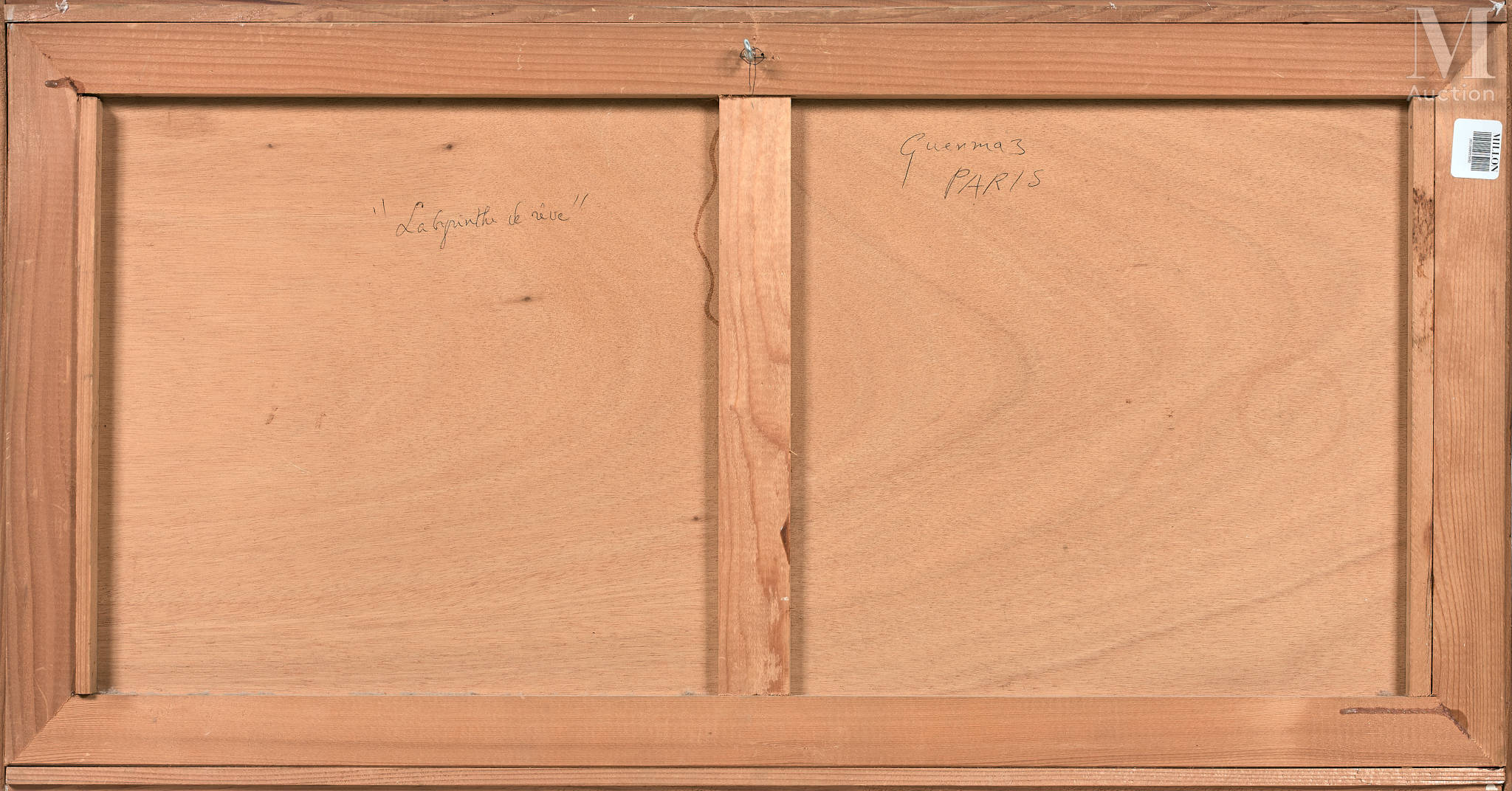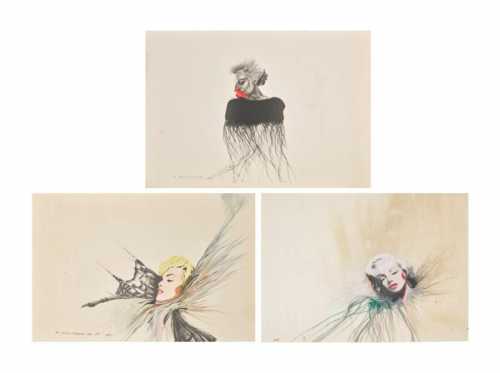- dream maze
- Oil on board
- Painting
- 71.9 * 34.7 cm
- Signed lower right, countersigned, located and titled on the back
16 December 2021
Estimation
€1,500
1,689 USD
-
€2,000
2,251 USD
Realized Price
€2,700
3,040 USD
54.286%
Artwork Description
This work has been included in the artist's catalog raisonné under number 1039
Recognized as one of the major non-figurative painters of the second half of the 20th century, Abdelkader Guermaz, born in 1919 in Mascara (Algeria), died in Paris in 1996, was with Khadda (1930-1991), Benanteur (1931) and Aksouh (1934), one of the founders of modern Algerian painting with an abstract tendency, but also one of the masters of the New School of Paris. On leaving the School of Fine Arts in Oran, where he was a student, he shared from 1940 to 1955 the figurative conception of the Painters of Poetic Reality. Noted for his precocious talent by Robert Martin, his paintings will rub shoulders at the Colline gallery in Oran with those of Algerian and European artists from Algeria, but also those of Picasso and Bernard Buffet. He will be invited to participate in 1951 in the Biennial of Menton. Around 1955 he gradually moves towards abstraction, like other painters of his generation attentive to the example given them by the Parisian avant-garde. He settled in Paris in the fall of 1961. Without it being possible to speak of an "Oran group", the meetings of Guermaz with Benanteur and Khadda, Michel-Georges Bernard tells us, enabled them to develop their research common and diverse of a new writing. Guermaz maintains contact with Algeria, participates in the exhibition Painters Algerians in Algiers on November 1, 1963, followed by that of the same name in 1964 at the Museum of Decorative Arts in Paris, then at the UNAP Salons of 1964 and 1974 in Algiers. Imbued with Western culture, but remained an Oriental, Guermaz will engage at the end of the 60s in a double pictorial and spiritual approach in search of the light that he will reflect and reflect in his work. Soon signs will emerge from the white canvas, occasional spots of color, layered planes, reliefs, “landscapes” which will gradually take on a “symbolic” character. These “landscapes” will then be part of another relationship to the world. There he will celebrate his Unity, within which two worlds are indissolubly linked, the spiritual world and the sensitive world, according to the conception of Sufism that he shares. In increasingly refined works, spirit will gradually prevail over matter. He will receive the support of the Entremonde gallery for nearly ten years until 1981, and will be invited to participate in international fairs, in Tokyo in 1972, in Tehran in 1974, in Tunis in 1980, in London in 1981, and will create tapestry cartoons for Riyadh airport in Saudi Arabia. Highlighted his work will obtain the recognition of the public and the critics. Testimony of his notoriety, the work of Guermaz will enter public collections, the Fine Arts museums of Algiers and Oran, in Paris the National Fund and the Municipal Fund of Contemporary Art, the Algerian Cultural Center, and the Institut du Monde Arabe, then at the Center Pompidou, as well as in a large number of private collections in Europe, Canada, the United States, Iran, Japan and the Middle East. Highlighted his work will obtain the recognition of the public and the critics. Testimony of his notoriety, the work of Guermaz will enter public collections, the Fine Arts museums of Algiers and Oran, in Paris the National Fund and the Municipal Fund of Contemporary Art, the Algerian Cultural Center, and the Institut du Monde Arabe, then at the Center Pompidou, as well as in a large number of private collections in Europe, Canada, the United States, Iran, Japan and the Middle East. Highlighted his work will obtain the recognition of the public and the critics. Testimony of his notoriety, the work of Guermaz will enter public collections, the Fine Arts museums of Algiers and Oran, in Paris the National Fund and the Municipal Fund of Contemporary Art, the Algerian Cultural Center, and the Institut du Monde Arabe, then at the Center Pompidou, as well as in a large number of private collections in Europe, Canada, the United States, Iran, Japan and the Middle East.
Recognized as one of the major non-figurative painters of the second half of the 20th century, Abdelkader Guermaz, born in 1919 in Mascara (Algeria), died in Paris in 1996, was with Khadda (1930-1991), Benanteur (1931) and Aksouh (1934), one of the founders of modern Algerian painting with an abstract tendency, but also one of the masters of the New School of Paris. On leaving the School of Fine Arts in Oran, where he was a student, he shared from 1940 to 1955 the figurative conception of the Painters of Poetic Reality. Noted for his precocious talent by Robert Martin, his paintings will rub shoulders at the Colline gallery in Oran with those of Algerian and European artists from Algeria, but also those of Picasso and Bernard Buffet. He will be invited to participate in 1951 in the Biennial of Menton. Around 1955 he gradually moves towards abstraction, like other painters of his generation attentive to the example given them by the Parisian avant-garde. He settled in Paris in the fall of 1961. Without it being possible to speak of an "Oran group", the meetings of Guermaz with Benanteur and Khadda, Michel-Georges Bernard tells us, enabled them to develop their research common and diverse of a new writing. Guermaz maintains contact with Algeria, participates in the exhibition Painters Algerians in Algiers on November 1, 1963, followed by that of the same name in 1964 at the Museum of Decorative Arts in Paris, then at the UNAP Salons of 1964 and 1974 in Algiers. Imbued with Western culture, but remained an Oriental, Guermaz will engage at the end of the 60s in a double pictorial and spiritual approach in search of the light that he will reflect and reflect in his work. Soon signs will emerge from the white canvas, occasional spots of color, layered planes, reliefs, “landscapes” which will gradually take on a “symbolic” character. These “landscapes” will then be part of another relationship to the world. There he will celebrate his Unity, within which two worlds are indissolubly linked, the spiritual world and the sensitive world, according to the conception of Sufism that he shares. In increasingly refined works, spirit will gradually prevail over matter. He will receive the support of the Entremonde gallery for nearly ten years until 1981, and will be invited to participate in international fairs, in Tokyo in 1972, in Tehran in 1974, in Tunis in 1980, in London in 1981, and will create tapestry cartoons for Riyadh airport in Saudi Arabia. Highlighted his work will obtain the recognition of the public and the critics. Testimony of his notoriety, the work of Guermaz will enter public collections, the Fine Arts museums of Algiers and Oran, in Paris the National Fund and the Municipal Fund of Contemporary Art, the Algerian Cultural Center, and the Institut du Monde Arabe, then at the Center Pompidou, as well as in a large number of private collections in Europe, Canada, the United States, Iran, Japan and the Middle East. Highlighted his work will obtain the recognition of the public and the critics. Testimony of his notoriety, the work of Guermaz will enter public collections, the Fine Arts museums of Algiers and Oran, in Paris the National Fund and the Municipal Fund of Contemporary Art, the Algerian Cultural Center, and the Institut du Monde Arabe, then at the Center Pompidou, as well as in a large number of private collections in Europe, Canada, the United States, Iran, Japan and the Middle East. Highlighted his work will obtain the recognition of the public and the critics. Testimony of his notoriety, the work of Guermaz will enter public collections, the Fine Arts museums of Algiers and Oran, in Paris the National Fund and the Municipal Fund of Contemporary Art, the Algerian Cultural Center, and the Institut du Monde Arabe, then at the Center Pompidou, as well as in a large number of private collections in Europe, Canada, the United States, Iran, Japan and the Middle East.
More lots by Abdelkader Guermaz
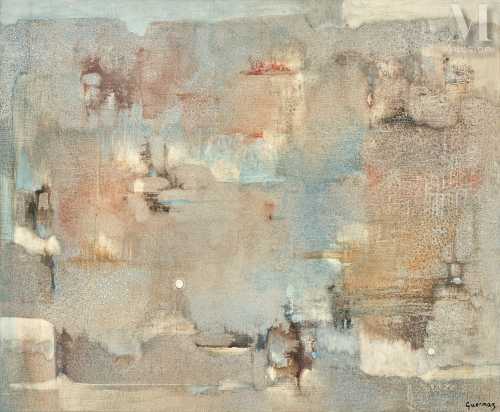
Aven of solitude
Estimation
€1,000
1,126 USD
-
€1,500
1,689 USD
Realized Price
€3,400
3,828 USD
172%
Sale Date
Millon & Associés
-
16 December 2021
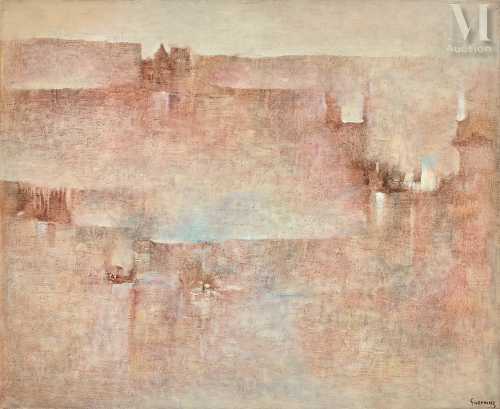
Untitled
Estimation
€1,000
1,126 USD
-
€1,500
1,689 USD
Realized Price
€2,450
2,758 USD
96%
Sale Date
Millon & Associés
-
16 December 2021
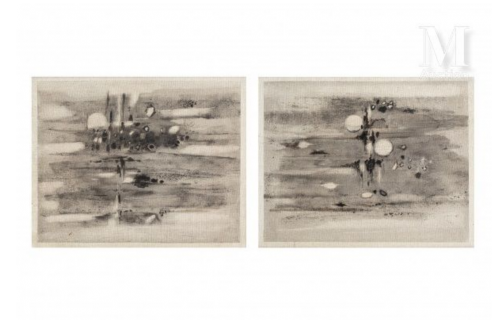
Untitled
Estimation
€800
975 USD
-
€1,200
1,463 USD
Realized Price
€1,105
1,347 USD
10.5%
Sale Date
Millon & Associés
-
16 June 2021
Realized Price
2,743 USD
Min Estimate
1,229 USD
Max Estimate
1,773 USD
Average Artwork Worth
+83.196%
Average Growth of Artwork Worth
Sales Performance Against Estimates
Similar Artworks
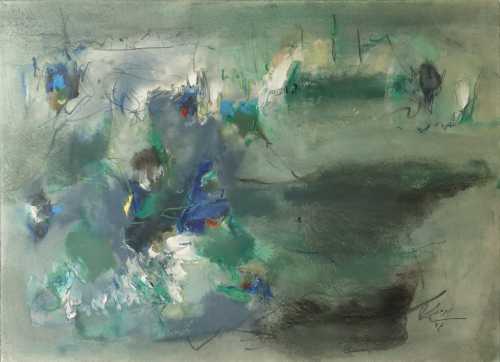
Untitled
Estimation
750,000,000﷼
2,913 USD
-
1,500,000,000﷼
5,826 USD
Realized Price
850,000,000﷼
3,302 USD
24.444%
Sell at
Sale Date
Smart Auction
-
1 January 2021
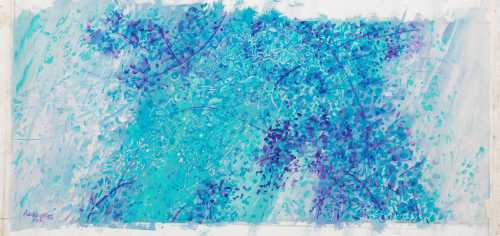
Untitled (Blue)
Estimation
£2,000
2,781 USD
-
£4,000
5,563 USD
Realized Price
£2,550
3,546 USD
15%
Sale Date
Bonhams
-
12 August 2021
